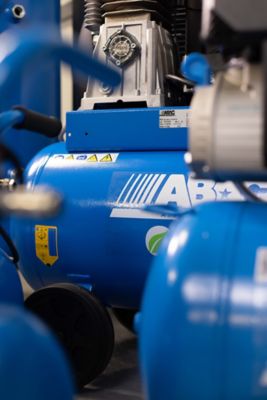Air compressors are an essential part of modern industry and everyday life. From powering pneumatic tools in workshops to inflating tires and even in medical applications, air compressors play a crucial role. But what exactly is an air compressor, and how does it work? In this comprehensive guide, we will explore the ins and outs of air compressors, their types, applications, and how to choose the right one for your needs.
What is an Air Compressor?
An air compressor is a powerful device that converts power into potential energy stored in pressurized air. It achieves this by drawing in air from the atmosphere and compressing it into a storage tank. The compressor increases the pressure of the air, thereby storing energy that can be released in a controlled manner for various applications. One can think of it as a mechanical device for inflating, powering, and assisting in numerous industrial and daily tasks.
Compressed air is a versatile and flexible medium for storing and transmitting energy, primarily consisting of nitrogen and oxygen. When air is compressed, its energy density increases, making it a reusable and relatively safe source of power. Due to these characteristics, air compressors are widely utilized in a variety of industries.
Additionally, air compressors vary greatly in size and capacity. Some are compact enough to be used at home for simple tasks like inflating tires and sports equipment, while others are large and powerful, used in industrial settings for powering machinery, tools, and processes.
Understanding the foundational elements and operational principles of air compressors is crucial for selecting the right tool for your specific needs.
How Do Air Compressors Work?
Air compressors work by drawing in atmospheric air and compressing it to a higher pressure. This process involves several key components:
- Intake Valve: The intake valve allows atmospheric air to enter the compressor.
- Compression Chamber: The air is then compressed in the chamber, either by a piston, rotary screw, or other mechanisms.
- Storage Tank: The compressed air is stored in a tank until it is needed.
- Discharge Valve: When the compressed air is required, it is released through the discharge valve.
The basic concept of all air compressors involves creating pressurized air via an element or air end, which is stored in a tank until released via a hose and valve for various industrial applications.
Piston Compressors
Piston compressors, also known as reciprocating compressors, work on a simple principle, much like the internal combustion engine in your car. They use pistons to compress the air within a cylinder. As the piston moves down, it creates a vacuum that draws air into the cylinder. When the piston moves up, the air is compressed and forced into a storage tank.
This type of compressor is suitable for operations with lower compressed air demands and is often used in smaller, transportable applications. Key features include:
- Cylinder and Piston: The main components that compress the air through up and down movements.
- Valves: Control the intake and output of air into and out of the cylinder.
- Multiple Stages: Some piston compressors have multiple stages for increased pressure capacity, essential for more demanding applications.
Rotary Screw Compressors
Rotary screw compressors use two meshing helical screws, known as rotors, to compress the air. As the rotors turn, they create a series of diminishing volume air pockets that compress the incoming air. When the air reaches the smallest volume at the end of the rotors, it is forced out into a storage tank. Rotary screw compressors are ideal for medium to large-scale operations and are known for their energy efficiency. Some key points are:
- Rotors: Twin helical rotors that reduce the air volume to increase pressure.
- Continuous Operation: These compressors can run continuously and are less prone to overheating compared to piston compressors.
- Variable Speed Drive (VSD): Often equipped with VSD to match the compressor's output with demand, optimizing energy usage.
What is an Air Compressor and how they work
Compressed air is a versatile resource used in various applications across different industries:
- Automotive: Powering pneumatic tools, painting, and tire inflation.
- Agriculture: They support tasks such as crop spraying, dairy farming, milking and powering irrigation systems.
- Manufacturing and Industrial: Operating machinery, automation, and material handling.
- Tradespeople: Air compressors are indispensable for tradespeople, providing the necessary power for a wide range of tools and equipment. Whether it's carpentry, plumbing, or electrical work, air compressors help tradespeople complete their tasks efficiently and effectively.
- Food and Beverage: Packaging, bottling, and food processing.
- Medical: Operating surgical tools, ventilators, and dental equipment.
- Construction: Powering jackhammers, nail guns, and sandblasters.
- DIY Users: For DIY enthusiasts, air compressors are valuable tools for various home improvement projects. You can use air compressors for different tasks: inflating tires, painting, and operating pneumatic tools.












